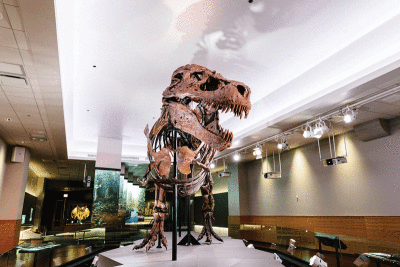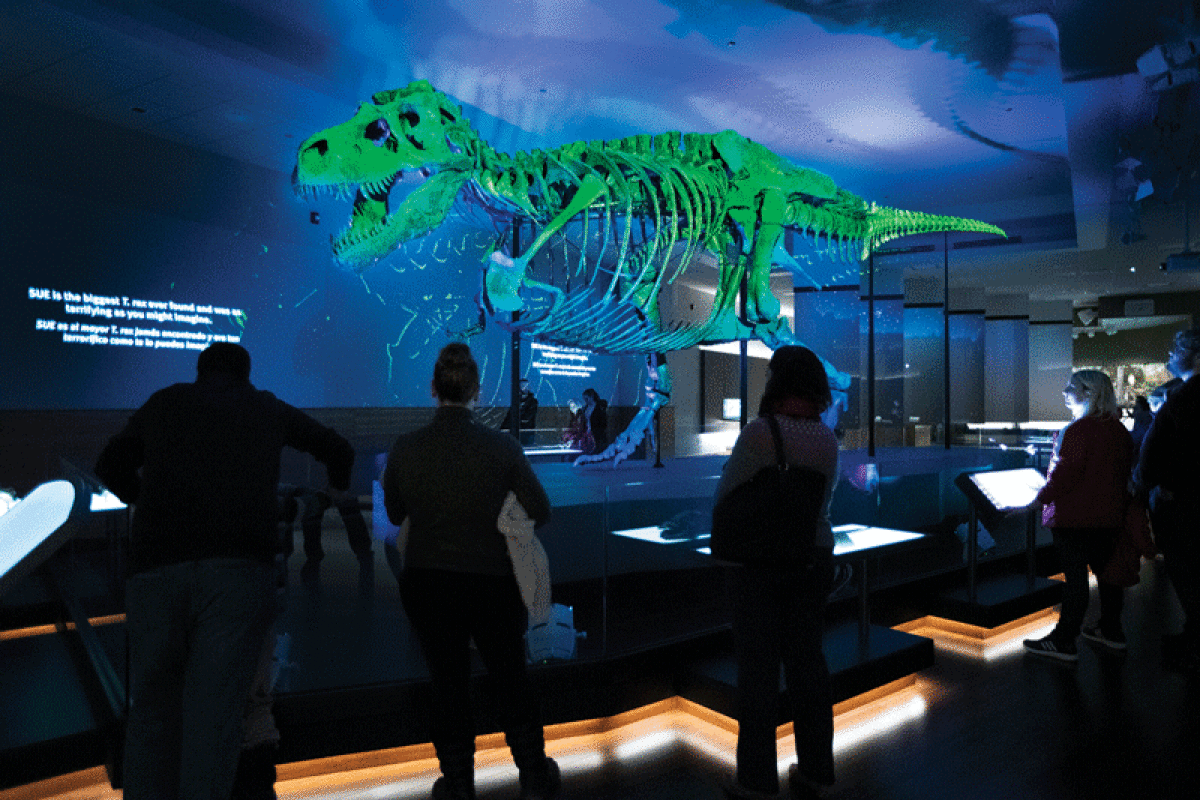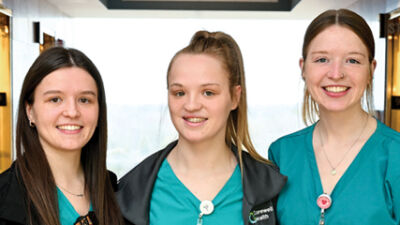
SUE is the most complete and best-preserved T. rex ever discovered.
Photo provided by The Field Museum
BLOOMFIELD HILLS — Get to know SUE, the most complete and best-preserved Tyrannosaurus rex ever discovered, at the Cranbrook Institute of Science.
“SUE: The T. rex Experience” will be on display until April 30. The traveling exhibit was organized by the Field Museum of Natural History in Chicago, where SUE’s actual fossils are on permanent display.
In 1990, a group from the Black Hills Institute was conducting field work in South Dakota. After finding some fossils, they were getting ready to wrap up their field season.
The group happened to get a flat tire as they were leaving, so, American explorer and fossil collector Sue Hendrickson decided to stay behind and keep looking around while the rest of the group went into town to fix the truck.
As Hendrickson was exploring some nearby cliffs, she ended up unearthing what is one of the largest and most complete T. rex fossils ever discovered.
SUE dates back about 67 million years.
Cranbrook Institute of Science will display a fully articulated SUE cast with added gastralia and a full-size, fleshed-out replica of SUE.
Dr. Andrew Gangidine, the institute’s curator of earth and space sciences, said, “For me, the coolest thing about the exhibit that is honestly hard to capture in either text, audio and even people taking promotional photos that we have been putting out is just the sheer size of SUE.”
The cast of SUE’s skeleton is about 40 feet from snout to tail, and 13 feet high at the hip.
While this exhibit is expected to resonate with school groups, it is designed to capture the attention of all ages.
“We all know that kids love dinosaurs, but what I am particularly excited about this exhibit is that I expect it to be something that any age will be absolutely captivated by,” Gangidine said.
The exhibit will be augmented with some of Cranbrook Institute of Science’s own fossil holdings, as well as resources that will put the SUE fossil in context for all of the visitors.
There will also be interactive elements at the exhibit, such as opportunities to learn what scientists think a T. rex’s breath smelled like, skin felt like and roar sounded like.
The exhibit will be presented in both English and Spanish, and will be a full sensory experience.
Mike Stafford, the director of the institute, emphasized that Cranbrook Institute of Science is fully reopened, and is a clean and safe venue for family outings.
“We are a safe venue where we put their (visitors’) health and wellness really at front of mind,” Stafford said.
Admission to the exhibit costs $10 for nonmember adults. Nonmembers must also pay general museum admission. It costs $9 for Institute of Science Standard Membership holders and $8 for children 2-12 and seniors over 65. The experience is free for enhanced members and children under 2 years old.
The exhibition will be open to visitors during regular museum hours.
More information about the exhibit can be found on science.cranbrook.edu.
 Publication select ▼
Publication select ▼
























